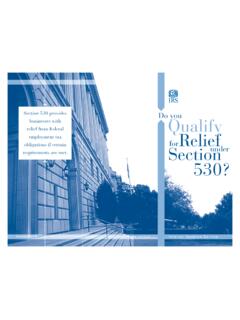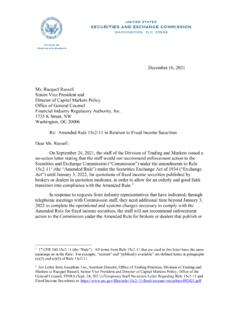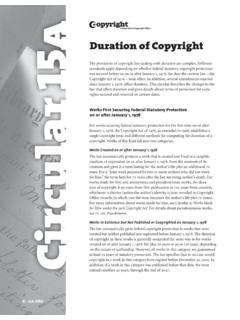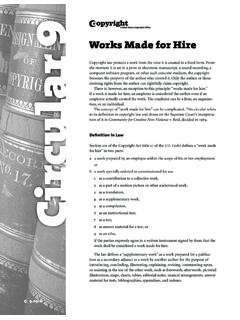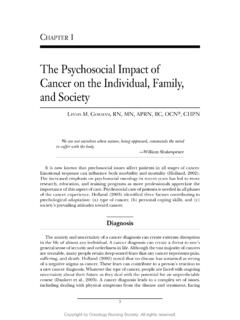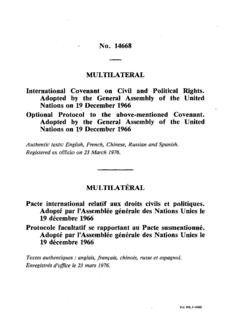Transcription of Social Exclusion: Concept, Application, and Scrutiny
1 ISOCIAL Exclusion: CONCEPT, APPLICATION, AND SCRUTINYA martya SenMaster of Trinity College, Cambridge, andLamont University Professor Emeritus, Harvard UniversitySocial Development Papers No. 1 Office of Environment and Social DevelopmentAsian Development BankJune 2000ii Asian Development BankAll rights reservedPublished June 2000 The analyses and assessments contained herein do not necessarily reflectthe views of the Asian Development Bank, or its Board of Directors orthe governments they 971-561-274-1 Publication Stock No. 120299 Published by the Asian Development Box 789, 0980 Manila, PhilippinesiiiCONTENTSF orewordvAcknowledgementsvi1. The Task of Evaluation and Assessment12. Poverty, Capability Deprivation, andSocial Exclusion33. Relational Features in Capability Deprivation64. The Language of Exclusion9 5. Social Relations: Constitutive and InstrumentalImportance12 6. Active and Passive Exclusion14 7. Persistent Unemployment and Exclusion: An Illustration 18 8.
2 European Origin, Universal Importance, and Asian Use 23 9. Practical Reason in a Changing World2710. Policy Issue: Sharing of Social Opportunities 3011. Policy Issue: Asian Crisis and Protective Security 3512. Policy Issue: Democracy and Political Participation 3813. Policy Issue: Diversity of Exclusions4014. Concluding Remarks44 References48ivvFOREWORDThis paper is the first in a series of Social Development Papers, whichare being issued to promote discussion of Social development issues thatinfluence development and poverty reduction. We are pleased that theinaugural paper in the series is an exposition by Nobel laureate AmartyaSen on an important and often overlooked dimension of poverty is generally recognized that poverty has both material and nonmaterialdimensions. Because of their obvious tangibility, many developmentpractitioners find it easier to understand and address the materialdimensions of exclusion of the poor from participation in and access to opportunitiesand activities is a major nonmaterial dimension of poverty that also needsto be recognized and addressed.
3 This paper helps us to understand socialexclusion as both a cause and a consequence of poverty. I hope that theideas conveyed in the paper will have a dual impact: first, that they willhelp development practitioners to obtain a better understanding andappreciation of the nonmaterial dimensions of poverty; and second, thatthey will stimulate discussion that will help development practitioners torespond effectively to this dimension of poverty reduction. Kazi F. JalalChief, Office of Environment and Social DevelopmentviACKNOWLEDGEMENTSThis document was originally prepared in 1998 for the Asian DevelopmentBank (ADB) as Social Exclusion: A Critical Assessment of the Concept and ItsRelevance, and revised in August 1999. For helpful discussions, includingcomments on the earlier version, I am most grateful to Tony (A. B.)Atkinson, Bhuvan Bhatnagar, Arjan de Haan, Rana Hasan, Jalal,Anita Kelles-Viitanen, Haidar A. Khan, Jean-Luc Maurer, HenryNeuberger, Gunilla Olsson, Timothy Smeeding, and Mohammad also profited from the discussions following three earlier presentationson this subject, respectively at (1) the ADB seminar on Inclusion orExclusion: Social Development Challenges for Asia and Europe inGeneva, 27 April 1998; (2) the 50th Anniversary Conference of theInternational Association for Research in Income and Wealth, inCambridge (keynote address), 27 August 1998; and (3) ADB seminars onsocial exclusion, Manila, September 1998.
4 Amartya Sen11. The Task of Evaluation and AssessmentThe term Social exclusion is of relatively recent origin. Ren Lenoir, writing about a quarter of a century ago, is given credit ofauthorship of the The notion has, however, already madesubstantial inroads into the discussions and writings on poverty anddeprivation. There is a large and rapidly growing literature on the concept of Social exclusion is seen as covering a remarkablywide range of Social and economic problems. Even in the practical contextof identifying the excluded in France, Ren Lenoir, as Secr taire d Etata l Action Sociale of the French Government, spoke of the following asconstituting the excluded a tenth of the French population:mentally and physically handicapped, suicidal people, aged invalids,abused children, substance abusers, delinquents, single parents,multi-problem households, marginal, asocial persons, and othersocial misfits.
5 3 The literature that has followed Lenoir s original initiative has vastlyadded to this already bulging list of the socially excluded. As Silver(1995) notes, the list of a few of the things the literature says peoplemay be excluded from must include the following:a livelihood; secure, permanent employment; earnings; property,credit, or land; housing; minimal or prevailing consumption levels;education, skills, and cultural capital; the welfare state; citizenshipand legal equality; democratic participation; public goods; the nationor the dominant race; family and sociability; humanity, respect,fulfilment and Lenoir (1974).2 For illuminating and insightful introductions to the literature (and also to the history, content, and implicationsof the idea of Social exclusion), see Rodgers et al. (1995), Jordan (1996), de Haan (1997), Gore and Figueiredo(1997), Figueiredo and de Haan (1998), and de Haan and Maxwell (1998).3 See Silver (1995), p. 63. See also Foucauld (1992).
6 4 Silver (1995), p. 60. See also Gore and Figueiredo (1997) and de Haan and Maxwell (1998).2 Social EXCLUSION: CONCEPT, APPLICATION, AND SCRUTINY5 This will obviously include Asia, since the paper is being written for use in the Asian Development is a veritable explosion of concern. The literature on Social exclusionis, obviously, not for the has not been all smooth sailing, though. The impression of anindiscriminate listing of problems under the broad heading of socialexclusion and of a lack of discipline in selection, combined with theenergy and excitement with which the concept has been advocated foradoption by its energetic adherents, has had the effect of putting offsome of the experts on poverty and deprivation. In Else Oyen s (1997)unflattering portrayal of the research enterprise on Social exclusion, newentrants in the field are seen as proceeding to pick up the concept andare now running all over the place arranging seminars and conferencesto find a researchable content in an umbrella concept for which there islimited theoretical underpinning (p.)
7 63). If the advocates have been vocal,so have been the this paper, I shall try to scrutinize the nature, relevance, andreach of the idea of Social exclusion. I must also try to connect the notionto concepts that have been articulated earlier and to which the idea ofsocial exclusion relates in a reasonably close way. We have to see whatit has added and why the addition may well be important. I shall alsocritically examine the possibility of using this idea in contexts other thanthe French and more generally European conditions in which it hasbeen originally terms of usefulness of the idea, we have to scrutinize andexamine critically what new insight if any is provided by the approachof Social exclusion. Does it contribute to our understanding of the natureof poverty? Does it help in identifying causes of poverty that may beotherwise neglected? Does it enrich thinking on policy and Social action inalleviating poverty? How would our understanding of poverty be anydifferent if we were to ignore the literature of Social exclusion altogether?
8 How would the policies chosen be any different? These critical issues arecentral to an appropriate evaluation and assessment of the idea of Poverty, Capability Deprivation, and Social ExclusionIt is useful to begin with the recognition that the idea of socialexclusion has conceptual connections with well-established notions inthe literature on poverty and deprivation, and has antecedents that are farolder than the specific history of the terminology might suggest. Indeed,I would argue that we can appreciate more fully the contribution madeby the new literature on Social exclusion by placing it in the broader contextof the old very aged idea of poverty as capability deprivation. Thatconnection with a very general approach will help us to appreciate theparticular emphases and focal concerns that the specific idea of socialexclusion helps to let us start far back in the realm of concepts and ideas. First,consider the characterization of poverty as simply shortage of income,which is, of course, very ancient and still fairly common in the establishedliterature on deprivation and destitution.
9 This view, which is rather farremoved from the relational notion of Social exclusion, is not, however,entirely without merit, since income properly defined has an enormousinfluence on the kind of lives we can lead. The impoverishment of ourlives results frequently from the inadequacy of income, and in this senselow income must be an important cause of poor living. And yet as thelast argument itself suggests ultimately poverty must be seen in termsof poor living, rather than just as lowness of incomes (and nothingelse ). Income may be the most prominent means for a good life withoutdeprivation, but it is not the only influence on the lives we can lead. Ifour paramount interest is in the lives that people can lead the freedomthey have to lead minimally decent lives then it cannot but be a mistaketo concentrate exclusively only on one or other of the means to suchfreedom. We must look at impoverished lives, and not just at idea of seeing poverty in terms of poor living is not emphatically not new.
10 Indeed, the Aristotelian account of the richnessof human life was explicitly linked to the necessity to first ascertain the4 Social EXCLUSION: CONCEPT, APPLICATION, AND SCRUTINY6 Aristotle, Nicomachean Ethics, Book I, section 7; in the translation of D. Ross (1980), p. 12-14. MarthaNussbaum (1988) has illuminatingly analyzed the reach and relevance of the Aristotelian that literature, see Sen (1987).8 Smith (1776), Vol. II, Book V, Chapter 2; in the edition by Campbell and Skinner (1976), p. own attempt at constructing a theory as well as an empirical framework for seeing poverty as capabilitydeprivation can be found in Sen (1980, 1983, 1984, 1985, 1992a); see also Dr ze and Sen (1989, 1995) andNussbaum and Sen (1993). The literature on capability deprivation is now quite extensive and far-reaching;see particularly Griffin and Knight (1990), Hossain (1990), UNDP (1990, 1997), Doyal and Gough (1991),Crocker (1992), Anand and Ravallion (1993), Desai (1995).










